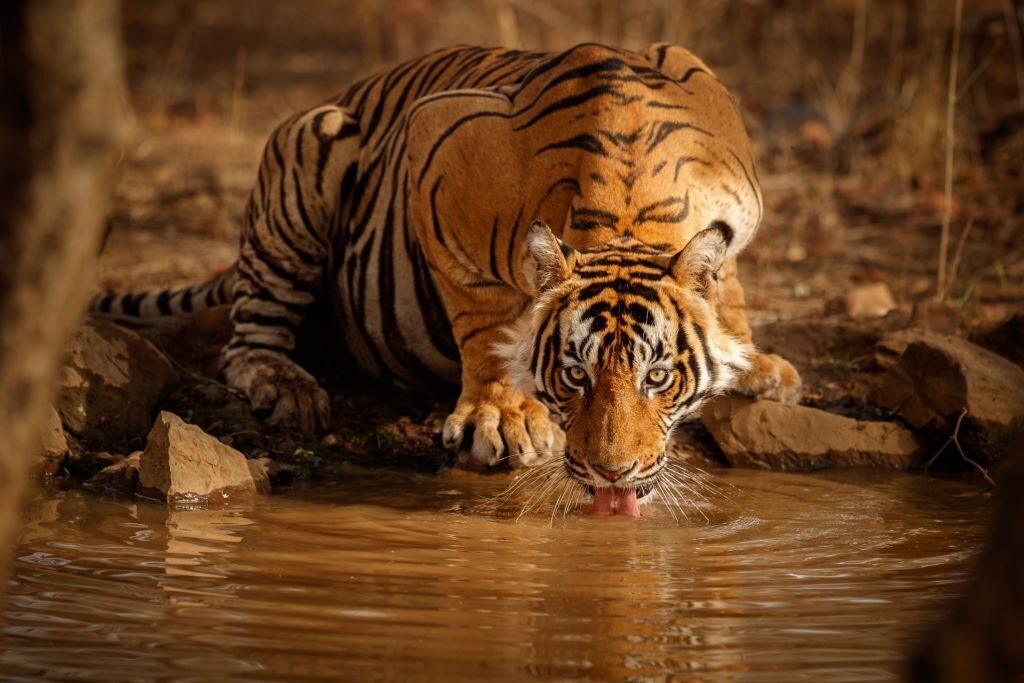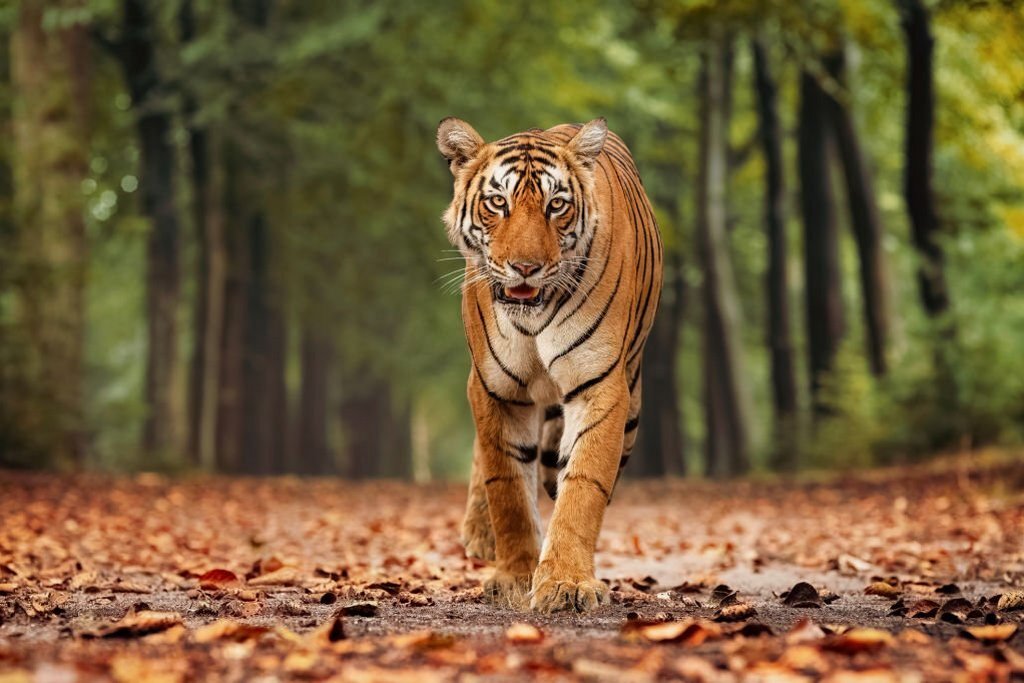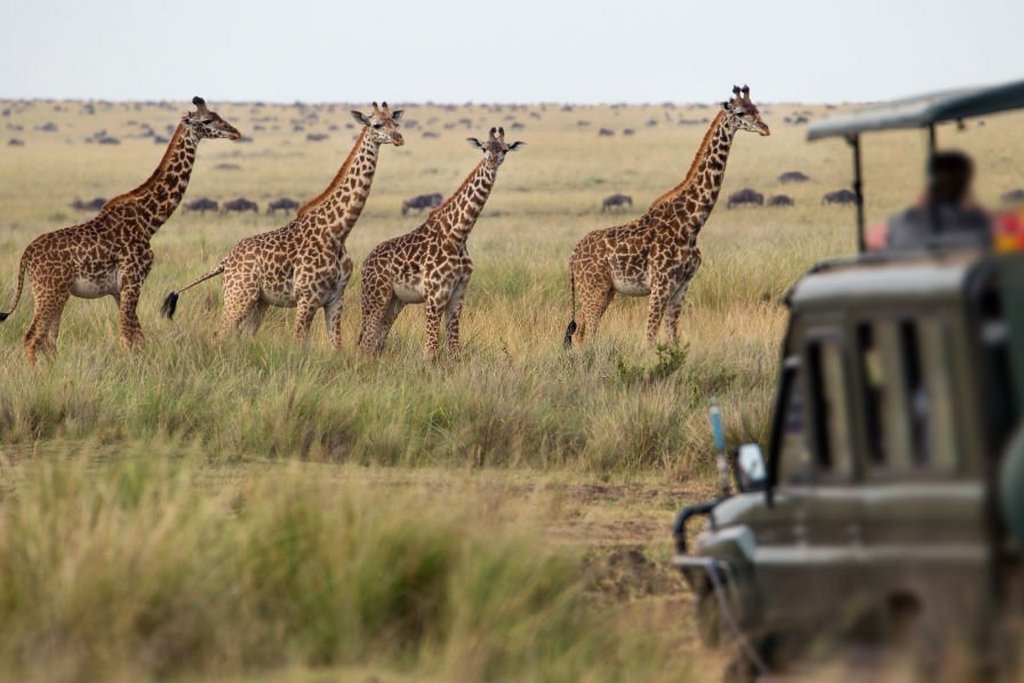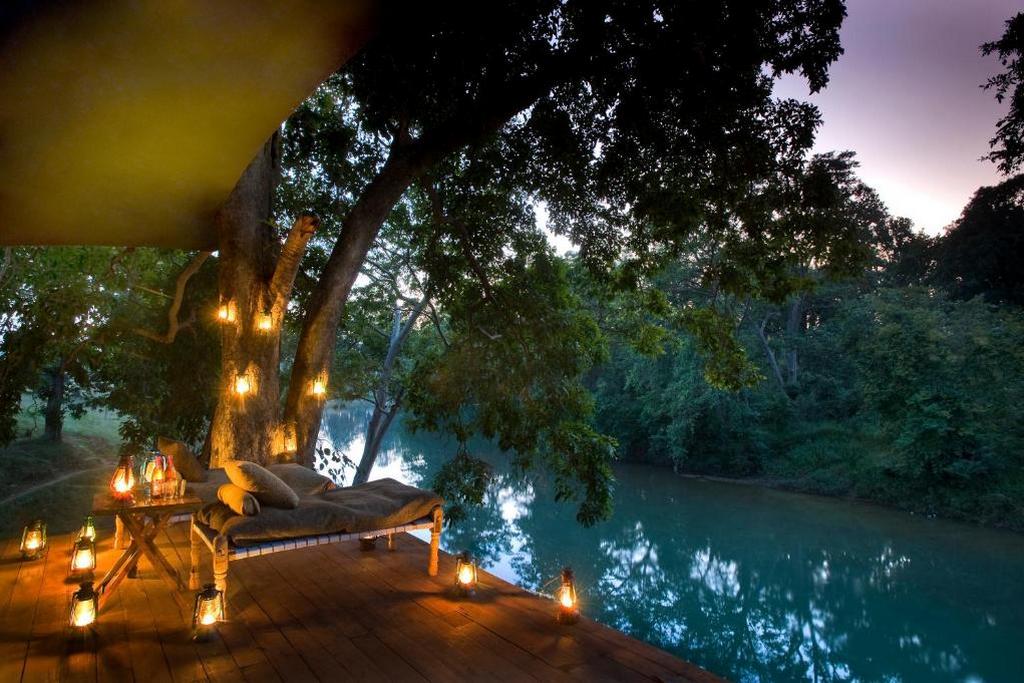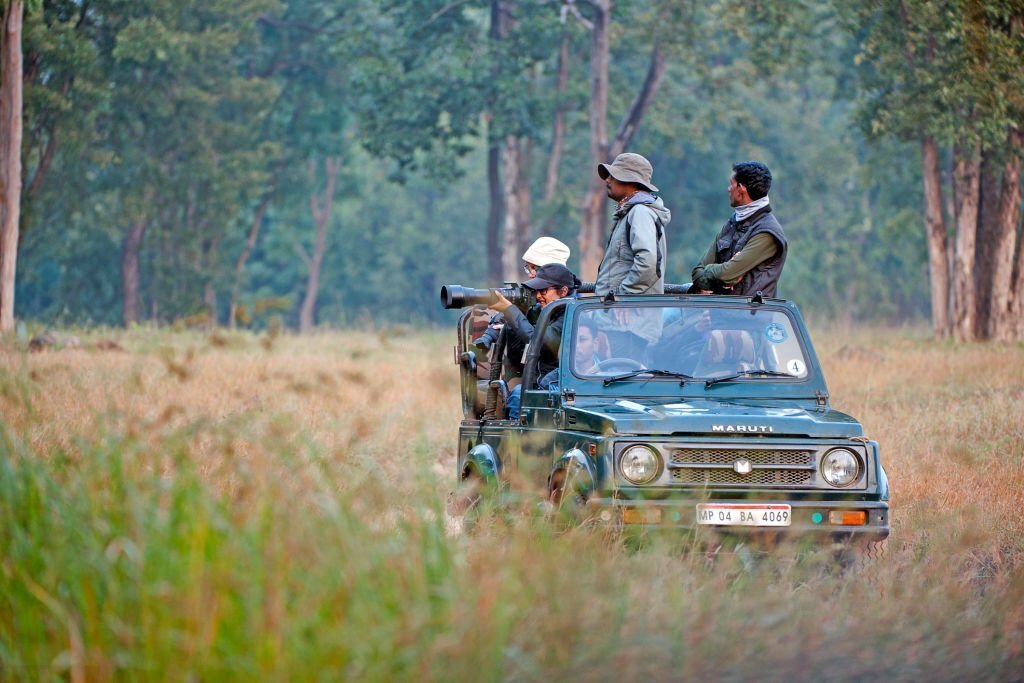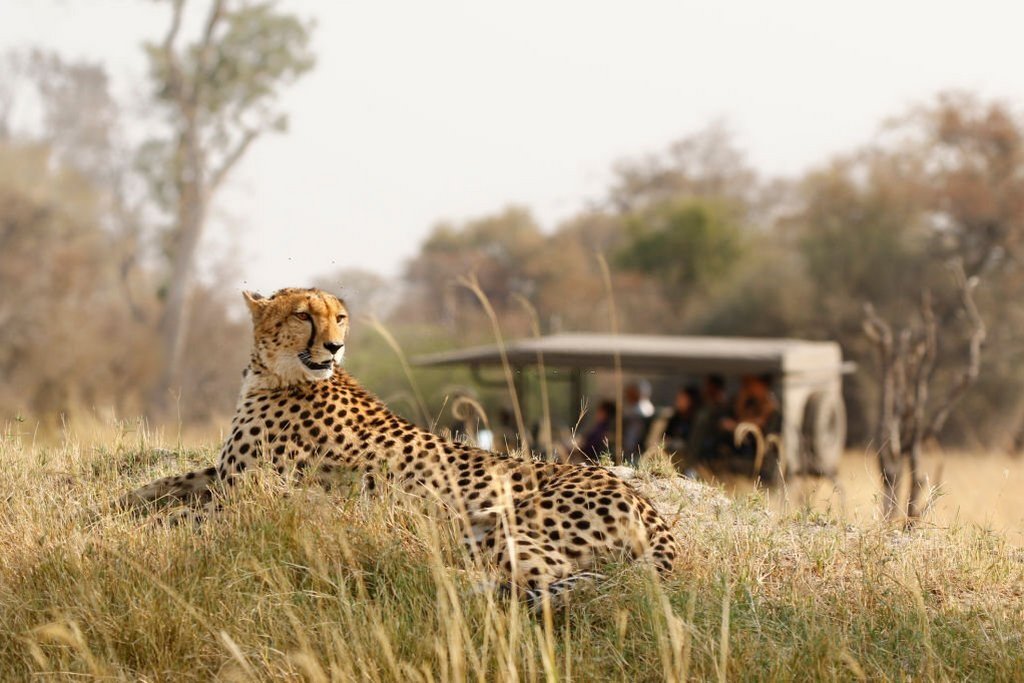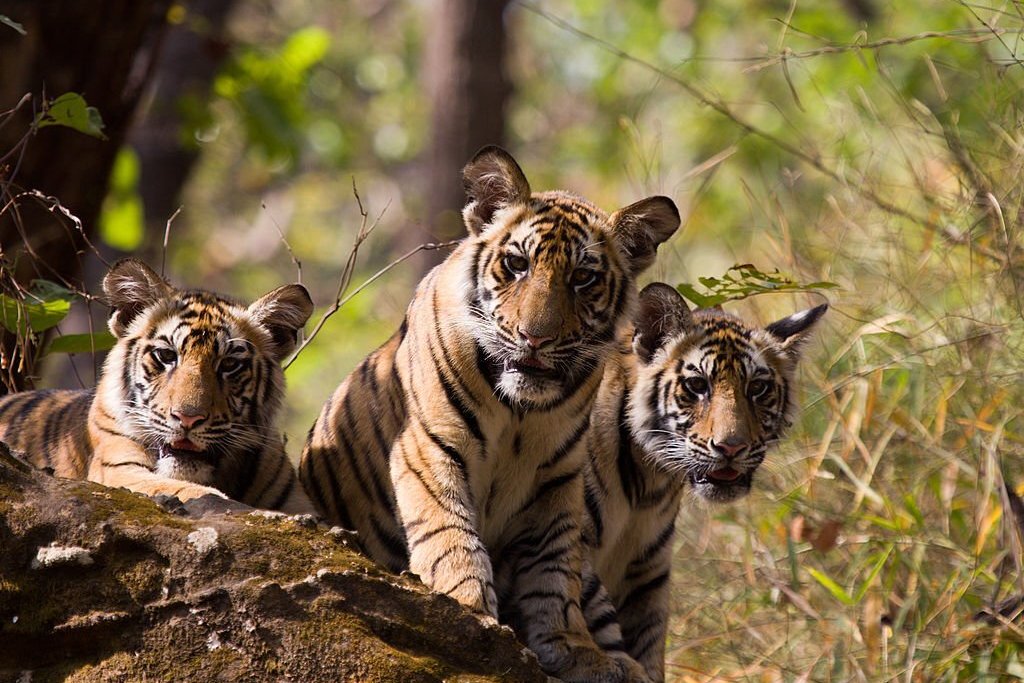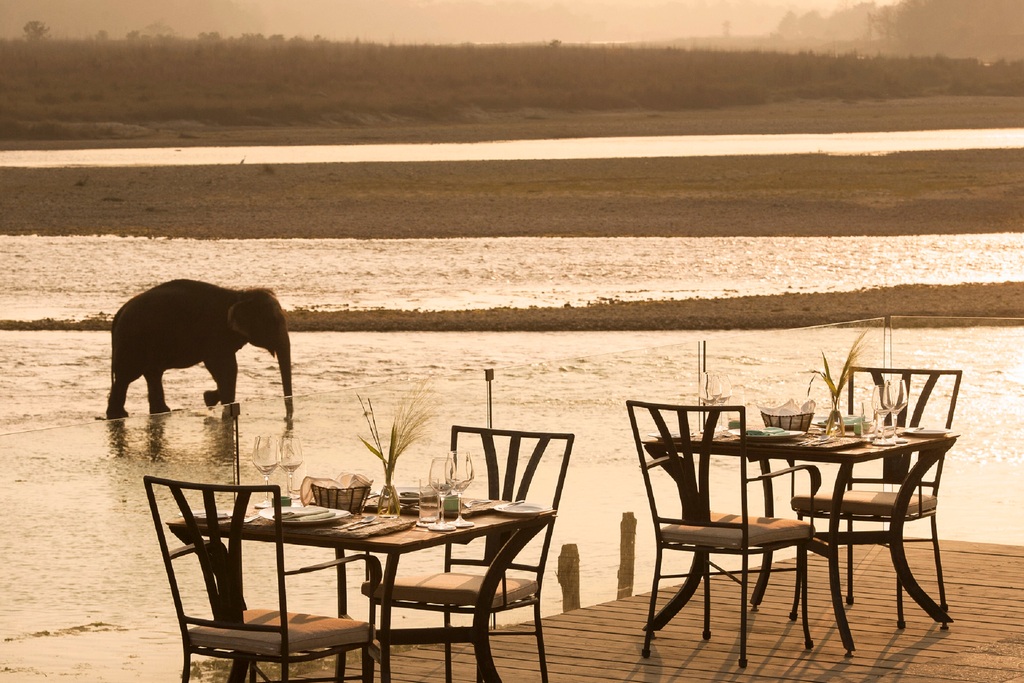Indian vs African Wildlife Safaris
Are you an avid wildlife enthusiast seeking an unforgettable safari experience? The allure of witnessing majestic creatures in their natural habitat is a passion shared by many, and two destinations that often top the list for wildlife safaris are India and Africa. In this blog post, we will embark on a journey to compare and contrast the thrilling world of tiger safaris in India and the iconic African wildlife tours. Let’s delve into the heart of these experiences to help you make an informed decision for your next adventure!
Detailed comparison of Indian Wildlife Safaris vs African Wildlife Safaris
1. Exclusive Tiger Encounters
India: India’s pride, the Bengal tiger, reigns supreme in its lush forests and diverse landscapes. The country boasts numerous tiger reserves, such as Corbett, Ranthambhore, Kanha, Bandipur, and Bandhavgarh, where you can witness these elusive cats in their natural habitat. Imagine the exhilaration of spotting a tigress gracefully stalking her prey or a majestic male tiger asserting his dominance. You also can spot other big mammals of the subcontinent in in India, some are sharing habitat with the tiger like Indian one horned rhinoceros, Asian elephants, common leopard, striped hyenas and wild buffalos, some are exclusive to their forests like Asiatic lion, clouded leopard, snow leopard, grey wolves etc.
Africa: While Africa offers a diverse range of wildlife, tigers are not found here. Instead, you’ll have the opportunity to encounter the “Big Five,” including lions, leopards, elephants, buffaloes, and rhinoceroses, creating a different but equally captivating experience.
2. Rich Cultural Experience
India: A safari in India is not just about wildlife; it’s an immersion into the country’s vibrant culture. As you explore the wilderness, you can also delve into the rich history of India by visiting ancient temples, bustling markets, and architectural wonders like the Taj Mahal. Savoring delectable Indian cuisine, infused with spices and flavors, adds an extra layer of delight to your journey.
Africa: While Africa has its own unique culture, safaris typically focus primarily on wildlife, with less emphasis on cultural immersion. The allure of Africa lies in its untamed wilderness and the awe-inspiring sights of nature at its most primal.
3. Varied Terrain
India: India’s topography varies significantly, offering diverse safari experiences. From the dense jungles of Madhya Pradesh to the arid landscapes of Rajasthan, from the evergreen forests of Western ghats and North-east India to the foothills of Himalayas, each region offers a unique backdrop for your tiger safari in India. The terrain can change dramatically within a single day, promising exciting surprises at every turn.
Africa: Africa also boasts diverse landscapes, but the iconic savannah plains of destinations like the Serengeti and the Maasai Mara, along with vast deserts like Namibia’s Sossusvlei, dominate the scenery. These sweeping vistas create a mesmerizing canvas for your wildlife adventure.
4. Affordability
India: Tiger safaris in India often come at a more budget-friendly price point compared to their African counterparts. India’s lower cost of living, coupled with a wide range of accommodation options, makes it accessible to a wider range of travelers. You can enjoy an incredible safari without breaking the bank.
African safaris can be costly due to long travel distances, luxury accommodations, and exclusive experiences.. While they offer unparalleled luxury, they may not fit every traveler’s budget.
5. Ease of Accessibility
India: Many tiger reserves in India are well-connected by road and air, making travel logistics relatively straightforward. Whether you’re exploring the jungles of central India or the foothills of the Himalayas, you’ll find convenient transport options to reach your safari destination.
Africa: African safaris often require longer and more complex travel arrangements, including international flights, followed by regional flights and extensive road transfers. While the journey is part of the adventure, it does demand more planning and patience.
6. Birdwatching Paradise
India: Apart from tigers, India is a birdwatcher’s paradise with an array of stunning avian species to observe. In the lush forests and wetlands, you can spot vibrant kingfishers, elegant storks, and the elusive Indian pitta. The cacophony of bird calls adds an enchanting dimension to your safari experience.
Africa: While Africa offers birdwatching opportunities, it may not match the sheer diversity of birdlife found in India. Countries like Tanzania and Kenya do offer excellent birding opportunities, but India’s diversity of bird species is truly exceptional.
7. Monumental Attractions
India: Combine your tiger safari with visits to world-famous landmarks like the Taj Mahal, a UNESCO World Heritage Site that stands as a testament to timeless love. Explore the intricately designed palaces of Jaipur, the ancient temples of Khajuraho, or the historical forts of Rajasthan. These architectural marvels offer a cultural counterpoint to your wildlife adventure.
Africa: While Africa has its share of historical sites, such as the pyramids of Egypt or the ancient rock-hewn churches of Ethiopia, safaris often prioritize wildlife, with cultural experiences taking a secondary role.
8. Luxury and Comfort
India: Luxury accommodations are available in India, offering a comfortable retreat after a day of wildlife exploration. Whether you choose to stay in opulent jungle resorts or boutique heritage hotels, you’ll find that India caters to your desire for relaxation and pampering.
Africa: Africa is renowned for its luxurious lodges and tented camps, providing a high-end safari experience that includes fine dining, spa treatments, and personalized service. These accommodations are designed to immerse you in the lap of luxury while being close to nature.
9. Guided Safaris
India: Expert naturalists and guides accompany you on Indian safaris, enhancing your understanding of the local ecosystem. These passionate individuals share their knowledge of the flora and fauna, ensuring that every moment in the wild is educational and captivating.
Africa: African safaris also feature knowledgeable guides, but the emphasis may vary depending on the location. In some regions, guides may prioritize tracking and spotting wildlife, while in others, they offer in-depth insights into animal behavior and conservation efforts.
10. Conservation Focus
India: Many tiger reserves in India are actively involved in tiger conservation efforts, allowing you to contribute to wildlife preservation. Your safari fee often goes towards funding initiatives that protect and conserve these magnificent creatures. By choosing a tiger safari in India, you become a partner in the ongoing battle to safeguard this endangered species.
Africa: African countries also prioritize conservation, with initiatives aimed at protecting endangered species such as rhinos and elephants. Many lodges and organizations in Africa actively support wildlife conservation projects, providing opportunities for travelers to contribute to these vital efforts.
11. Best Time to Visit
Safari in India vs. Safari in Africa: When it comes to the best time to visit, Indian safaris are ideal during the winter months from October to April. The cooler weather makes wildlife sightings more frequent. In contrast, African safaris vary by region, with East Africa’s Great Migration from July to September being a standout. The best timing depends on the specific experiences you desire, whether it’s tiger spotting in India’s winter or witnessing the dramatic wildebeest river crossings in Africa.
12. Safari Duration and Itinerary
Safari in India vs. Safari in Africa: The duration and itineraries of safaris in India tend to be shorter, often ranging from 3 to 7 days, given the compact size of tiger reserves. In Africa, safaris can vary widely in length, from a week to multiple weeks, allowing travelers to explore vast territories and multiple ecosystems. Choose your safari based on the time you have available and the diversity of experiences you seek.
13. Wildlife Diversity
Safari in India vs. Safari in Africa: Indian safaris primarily offer the chance to witness the royal Bengal tiger, along with a variety of other wildlife such as leopards, elephants, and Indian rhinoceroses. African safaris, on the other hand, present an astonishing array of wildlife, including the iconic Big Five (lions, elephants, leopards, buffalo, and rhinoceroses), along with giraffes, zebras, hippos, and numerous antelope species. Africa’s biodiversity is unmatched, making it a top destination for wildlife enthusiasts.
14. Photography Opportunities
Safari in India vs. Safari in Africa: Both India and Africa offer incredible photography opportunities, but they differ in terms of subject matter. In India, the focus is on capturing the elusive tigers and the lush landscapes of its tiger reserves. In Africa, photographers have a broader canvas, with opportunities to photograph diverse wildlife, sweeping savannahs, and dramatic landscapes like the Serengeti’s vast plains.
15. Cultural Immersion in Africa
Safari in India vs. Safari in Africa: While Indian safaris offer cultural experiences such as visits to ancient temples and local markets, African safaris excel in cultural immersion with opportunities to interact with indigenous tribes like the Maasai in Kenya and the Himba in Namibia. Travelers can engage in traditions, dances, and rituals that have been preserved for centuries, adding a unique dimension to their safari experience.
16. Conservation Efforts
Safari in India vs. Safari in Africa: Both regions prioritize wildlife conservation, but the focus and approach may differ. In India, there is a strong emphasis on tiger conservation, with many reserves actively engaged in protection efforts. African countries also prioritize conservation, with a broader range of species, including elephants and rhinoceroses, often at the forefront of conservation initiatives. Travelers can actively support these efforts in both destinations.
17. Family-Friendly Safaris
Safari in India vs. Safari in Africa: Indian safaris can be family-friendly, with options for accommodations that cater to children. However, African safaris often provide a wider range of kid-focused activities, such as guided nature walks, junior ranger programs, and educational wildlife experiences. Families may find Africa’s safaris more tailored to their needs for an enriching family adventure.
18. Solo Traveler Tips
Safari in India vs. Safari in Africa: Solo travelers in both India and Africa can enjoy enriching experiences. In India, group safaris are common, providing solo travelers with companionship and shared experiences. In Africa, group and solo options are available, but solo travelers may find more diverse opportunities for joining group tours and mingling with fellow adventurers.
19. Packing Essentials
Safari in India vs. Safari in Africa: Packing essentials for both safaris include comfortable clothing, binoculars, and insect repellent. However, the specifics may vary. For instance, African safaris often require more neutral-colored clothing for better wildlife viewing, while Indian safaris might necessitate warmer clothing during the winter months.
20. Local Cuisine and Dining
Safari in India vs. Safari in Africa: Culinary experiences differ significantly. In India, you can savor the spicy and diverse flavors of Indian cuisine, often infused with regional specialties. In Africa, they typically focus dining on hearty and wholesome meals, with options like traditional South African braai (barbecue) and bush dinners under the starry skies. Both offer delightful culinary adventures reflecting the local culture.
Conclusion
In conclusion, while both India and Africa offer extraordinary wildlife safari experiences, India emerges as a compelling choice for those seeking a unique and enriching adventure. The reasons that make wildlife safaris in India a standout option over Africa are multifaceted.
First and foremost, India offers the exclusive opportunity to witness the majestic Bengal tiger in its natural habitat, an encounter unparalleled by any other. The rich cultural tapestry woven into India’s safaris provides travelers with not only a wildlife spectacle but also a deep immersion into the country’s vibrant traditions, historical sites, and delectable cuisine.
India’s diverse topography, ranging from dense jungles to arid landscapes, offers a myriad of safari experiences within one country. Its affordability, accessibility, and strong conservation focus make it a more accessible and responsible choice for many travelers.
Moreover, the chance to explore iconic monuments like the Taj Mahal and delve into India’s fascinating history further enriches the Indian safari experience. India offers luxury accommodations, guided safaris by expert naturalists, and a great focus on birdwatching to meet different interests and budgets..
In summary, while Africa undoubtedly holds its own allure, the unique combination of tiger encounters, cultural immersion, affordability, and conservation opportunities makes wildlife safaris in India an exceptional choice for those seeking a truly unforgettable wildlife adventure. India’s safaris offer an extraordinary journey that goes beyond wildlife viewing, leaving an indelible mark on the hearts of travelers for years to come.


